Serving as a Research Associate can help students in many ways. It can assist with coursework and help students decide on career plans. While doing research, students will develop a better understanding of research methods and will improve critical thinking and problem-solving skills.
Current Research Projects

The research lab of Dr. Andrew Gardner in Biology is working on questions about the evolution of plants and plant communities in California and beyond. The team’s work involves several interrelated projects that connect plant collection in the field, herbarium curation and data management, DNA sequencing, phylogenetic analysis, and niche modeling. Dr. Gardner also has ongoing projects related to morphological evolution in a South American group of succulents (Oxalis) and floral shape evolution among Australian wildflowers (Goodeniaceae). Dr. Gardner’s research team is enthusiastic about outreach, as well as research, and works diligently to share its work with the public as well as with the botanical community.
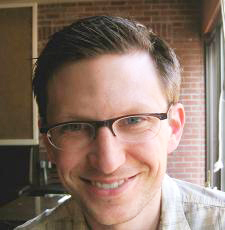
- On Sabbatical -
Dr. Cover is on sabbatical and won't be taking on any research students until Fall 2022.
Dr. Cover and his students conduct research on freshwater ecosystems, with a focus on aquatic insects. Over the next few years, a major goal is to investigate the biodiversity of temporary streams (i.e., creeks that dry up for part of the year) in the Diablo Range, the hills that run along the west side of the San Joaquin Valley. Very little is known about the biology and ecology of these aquatic habitats and organisms, so Dr. Cover and his students are making regular visits to nearby streams to determine which species are present and how their life cycles are adapted to the annual cycles of wetting and drying. Laboratory research involves sorting and identifying aquatic invertebrates, careful observation of the morphology of aquatic insects using microscopy and photography, and preparation of samples for genetic sequencing to determine genetic differences among populations. This research is motivated by a desire to learn about the non-human world all around us (natural history) as well as to prevent the extinction of species and loss of biodiversity (conservation biology). Dr. Cover is willing to serve as a research mentor to students from all STEM disciplines.

Dr. Sankey’s current research (and teaching) is on the climate crisis and local solutions, especially solutions we can all get involved in. Her RISE research students this year will work on research related to the new Turlock Community Gardens. This community garden is on 0.6 acres of leased land, two blocks north of campus. The garden contains 45 individual garden plots that families, students, and neighbors use, producing food for themselves and the community. In addition, there are four plots for CSUS student organizations. RISE student researchers will work on a variety of projects related to the Turlock Community Gardens, including making an inventory of all the animals (birds, insects, etc) that now use this community garden to understand how gardens influence biodiversity within a city. Other research projects will focus on composting methods, soil improvements, etc. Dr. Sankey is willing to serve as a research mentor to students from all STEM disciplines. Visit the Turlock Community Gardens website to learn more: https://www.turlockcommunitygardens.org/
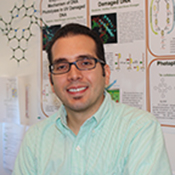
Research in the lab of Dr. Elvin Alemán (Chemistry) involves looking at the Photophysical, Electrochemical, and Spectroelectrochemical Characterization and Solvent Effect on the Tautomerism of Free-Base Corrole. The research team investigates the photophysical and electrochemical properties of corrole molecules and how solvent molecules can influence the ability of this molecule to capture light and mimic photosynthesis. A detailed understanding of these properties is important in order to use porphyrins and corroles in molecular, electronic and photonic devices. Dr. Alemán’s research team is also starting a new project in the extraction and characterization of natural pigments in flowers. The color that you see in plants and flowers are the result of the interaction light with several chemical compounds called pigments. Anthocyanins are responsible pigments for the blue, violet and maroon colors of many flowers. Anthocyanin-rich vegetables and flowers have been consumed for prevention of diseases and because they are strong antioxidants. They will use chromatographic techniques to separate the pigments found in the petals of black tall bearded iris flowers. Raman spectroscopy will help to identify and quantify the high content of anthocyanin compounds in black flowers, which are potential pharmaceutical ingredients to prevent different diseases. Dr. Alemán would prefer to mentor students that at least are currently taking General Chemistry II.

Research with Dr. Melanie Martin in Computer Science involves exploring, visualizing, and filtering data: Data is everywhere in our world today: How can we find ways to make the data useful to make decisions and gain new knowledge about our world, without being overwhelmed? Dr. Martin and her student researchers will study and create tools to help explore, visualize and find patterns in data. Student researchers will learn basic data processing and data mining skills and use these skills on real-world data. Fake news detection: How can we tell if what we are reading is real or fake? Can we tell from the content itself, or do we need to explore networks in social media? Could we develop automatic tools to help us decide? Dr. Martin is willing to serve as a research mentor to students from all STEM disciplines.

Dr. Gönül Schara’s research interests include protein engineering of enzymes with improved properties for biotechnology, bioprocessing and green chemistry applications. “Why does her research team have a passion for enzymes? Enzymes are remarkable natural molecules! For example, they make it possible to clean-up harmful chemicals while, at the same time, produce valuable compounds using environmentally-friendly methods rather than expensive, traditional chemical processes.” Dr. Schara (Chemistry) is willing to serve as a mentor to motivated students who are interested in enzyme research.
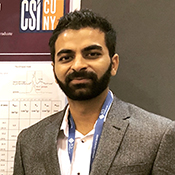
Dr. Manchanda's research is in the field of nanoporous materials. His research group is working to develop heterogeneous catalysts for various acid and base-catalyzed reactions. Some other research projects in his lab include developing the nanoporous materials for carbon dioxide sequestration and targeted drug delivery. Dr. Manchanda is willing to serve as a research mentor to students from all STEM disciplines.

- On Sabbatical -
Dr. Ferriz is on sabbatical for Fall 2021 and won't be taking any new resarch students until Spring 2022.
Dr. Ferriz and his students are using measurements of ground resistivity to identify sites that are promising for aquifer recharge. The idea is that a good recharge site would be underlain by high resistivity sands, rather than low resistivity clays. Students working in this research project will acquire the field data using the Geology program's Ohm Mapper, and will process the acquired data to produce tomographic images of resistivity in the subsurface. Dr. Ferriz is also working on the Central Valley Air Quality Monitoring Project where he and other colleagues are analyzing air quality along the central valley California to see if it is affected by different weather conditions or events.
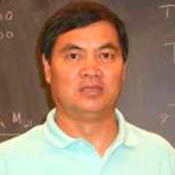
The lab of Dr. Leon Zhang in Physics conducts research in nanomaterials. The student researchers synthesize nanoparticles and measure the physical properties of the nanoparticles using laser systems. Dr. Zhang is looking for students who are interested in nanomaterials research. Ideally, students should have some basic knowledge in the area.

Dr. JungHa An is a mathematician with a message: “Dear prospective research assistants, are you interested in how to analyze and derive a pattern of a large data set using statistics? Or would you like to generate sharp images from blurred and noise data sets by incorporating calculus of variations or partial differential equations through optimizing process?” As an applied mathematician, Dr. An’s research interest is utilizing mathematics to solve real-world application problems. In particular, her research specialty is to develop a mathematical modeling with an emphasis on medical imaging. She involves undergraduates in her research, since 2010 and expands research-related projects into classes as well. She has various topics on her undergraduate research, which include pattern recognition, second-hand smoking effects, image analysis on chicken-egg embryonic development with different level of smoking exposures, and finding the center of the galaxy. She is also very excited to start her new undergraduate research project on the analysis of air-quality in Central Valley with Columbia and Merced Community Colleges. Any Student in STEM majors that is excited to explore to use mathematics to advance our daily life with me!

Oxidations are an important part of organic chemistry. Toxic chromium(VI) oxidizing agents are traditionally used, but hydrogen peroxide is a green alternative, although it can be slow to act. We seek methods to activate hydrogen peroxide to make it a viable and attractive oxidizing agent.
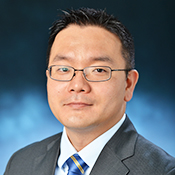
The research lab of Dr. Kyu Han Koh in Computer Science focuses on STEM education with technology, specifically on improving the quality of student learning from two complementary perspectives. One perspective involves measuring a student’s learning performance and providing feedback to students and teachers. The other perspective focuses on enhancing students’ learning experience and their measured learning performance through cognitivism, constructivism, and connectivism. Dr. Koh has compiled extensive research records on educational data analytics: knowledge transfer between game and simulation design, creativity analysis, skill progression and learning performance in programming. Dr. Koh’s research group is enthusiastic about outreach, as well as research, and works diligently to share its work with the public as well as with the STEM education community. Dr. Koh is willing to serve as a research mentor to students from all STEM disciplines.
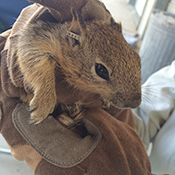
Dr. Cooper’s research program uses the California ground squirrel to address questions about mammalian genetics, ecology and evolution. The Central Valley of California is a drastically altered landscape, with almost every square mile of arable land dedicated to food production, but CGS population densities are very high in the Valley even after years of drought. CGS are deserving of special attention because they have maintained historical ranges in the face of extensive and extreme modifications to their environment. What traits allow the California ground squirrel to adapt to a human-altered landscape, and what factors are driving the expansion of CGS populations? Dr. Cooper’s research team addresses these questions, using combined ecological, behavioral, microbiological and molecular approaches. Her students have been live-trapping CGS in three National Wildlife Refuges in the Central Valley since 2015. Students on her team collaborate on mini-projects, which they design and implement themselves. Students use genetic markers to characterize the mating system and dispersal pattern in CGS, and to determine if individual genome-wide heterozygosity predicts traits important for fitness, such as fluctuating bilateral symmetry, parasite load and gut microbiome profile. Others perform vegetation surveys to assess food availability, and use ArcGIS to map CGS burrow density onto the landscape. Recently, students have explored how remote cameras can capture natural foraging behavior. Dr. Cooper is willing to serve as a research mentor to students from all STEM disciplines.

Dr. To’s research is on astroparticle physics in the sub-field of experimental detection of dark matter here on Earth. He works with collaborations from all over the world on the LUX/ZEPLIN experiment. It is a dual phase time projection chamber designed to "see" the very weak interaction between dark matter and everyday baryonic (normal) matter. The experiment is located in Lead, South Dakota, approximately a mile underground in a retired gold mine. Work at Stan State involves testing out new light detection methods and photon sensors for future detectors. In the meantime, his group is also an integral part of the analysis of the scientific data. They use machine learning with statistical methods to model the experimental background in order to increase the sensitivity of the detector.
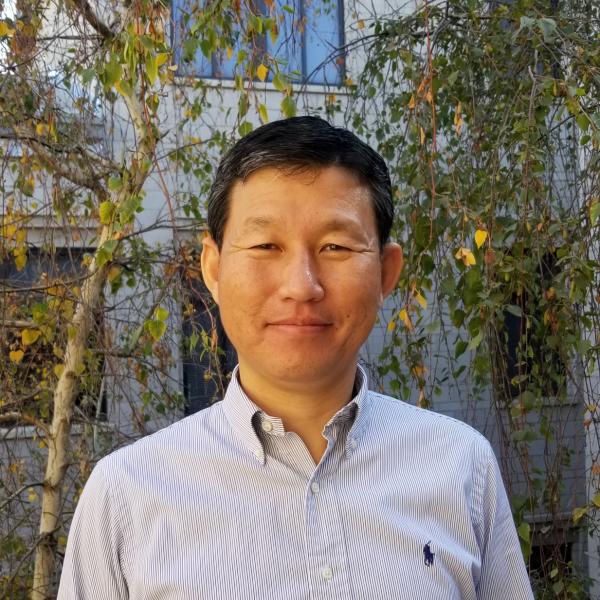
Dr. Kim's research interests include Big data analysis and processing, Computer networking and Cyber security, Cloud Computing, and Internet of Thing (including smart city and smart farm). The projects under Dr. Kim involve extensive design, deployment, and development of practical solutions for the topics. One of the ongoing projects is medical Big data analysis to find correlation between disease (8,000) and genome data (of 22 chromosomes) of 20,000 patients. The other ongoing project is Smart Farm based on Internet of Things that develops holistic solutions using sensor devices, data transfer to Cloud through network, analysis and pattern recognition using machine learning in Cloud, data visualisation through Web and Mobile Application, and signal system to end users. Dr. Kim is willing to serve as a research mentor to computer science majors and minors.
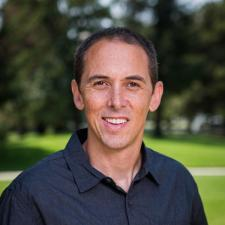
My research students are currently working on two projects. The first involves a gas chromatographic method to quantitate ethanol volume percent in kombucha teas. The second project aims to characterize the alpha acid composition in craft beers without the need for costly HPLC instrumentation, which will enable small craft breweries to make more informed decisions regarding their hop additions. I accept undergraduate research students that are typically chemistry or biology majors with an interest in analytical chemistry.
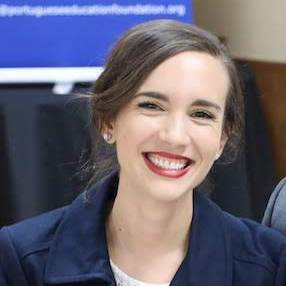
Dr. Jessica De Silva’s undergraduate research projects involve data analysis and the development of predictive models via machine learning algorithms. Students have the freedom to choose a data set that suits their interest; examples of data sets include: Pizza Restaurants and Pizzas on their Menus and Climate Change: Earth Surface Temperature Data. From the data, they will create a model that uses the information given to predict a parameter of their choice. The student using the Pizza data set is trying to predict pizza prices based on the restaurant location and prices of other menu items. The created model will also highlight what part(s) of the data are highly correlated with the predicted parameter. Dr. De Silva welcomes Mathematics and Computer Science majors who have taken CS1500 or have programming experience. Other majors with interests in data analytics will be considered.

My research is in astronomy, particularly involving explosions in space. Using computers, I model supernova, gamma-ray bursts, and other events involving black holes and neutrons stars. I compare models with real observations to try to learn the properties and origins of these very energetic events. I am open to working with students in Physics, Computer Science, Math, and Chemistry
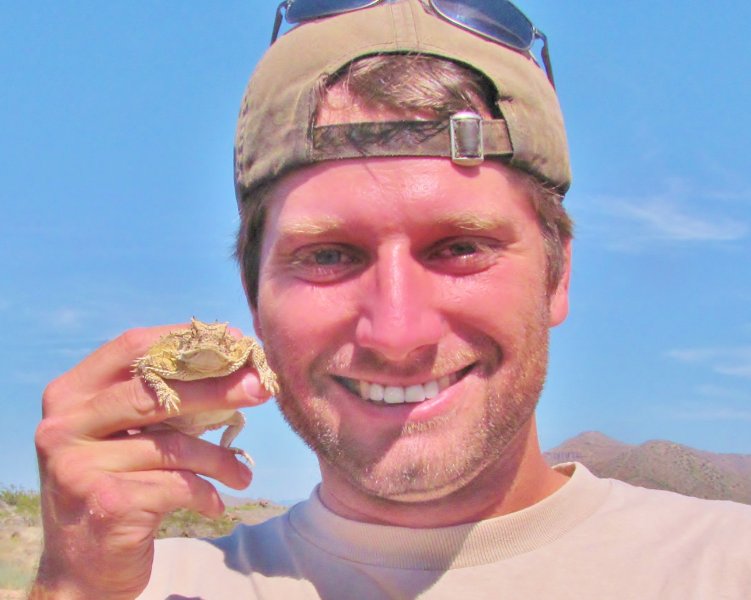
The research lab of Dr. Scales explores the evolution of morphological diversity and form-function relationships in animals. We are especially interested in how variation in shape and/or physiology translates into differences in organismal performance (ex. differences in running or jumping capabilities), and what environmental needs or selective pressures underlie this variation. Dr. Scales' research team investigates form-function relationships in a variety of organisms ranging from damselflies to salamanders and lizards. Dr. Scales is willing to serve as a research mentor to students from all STEM disciplines.
Updated: August 08, 2023